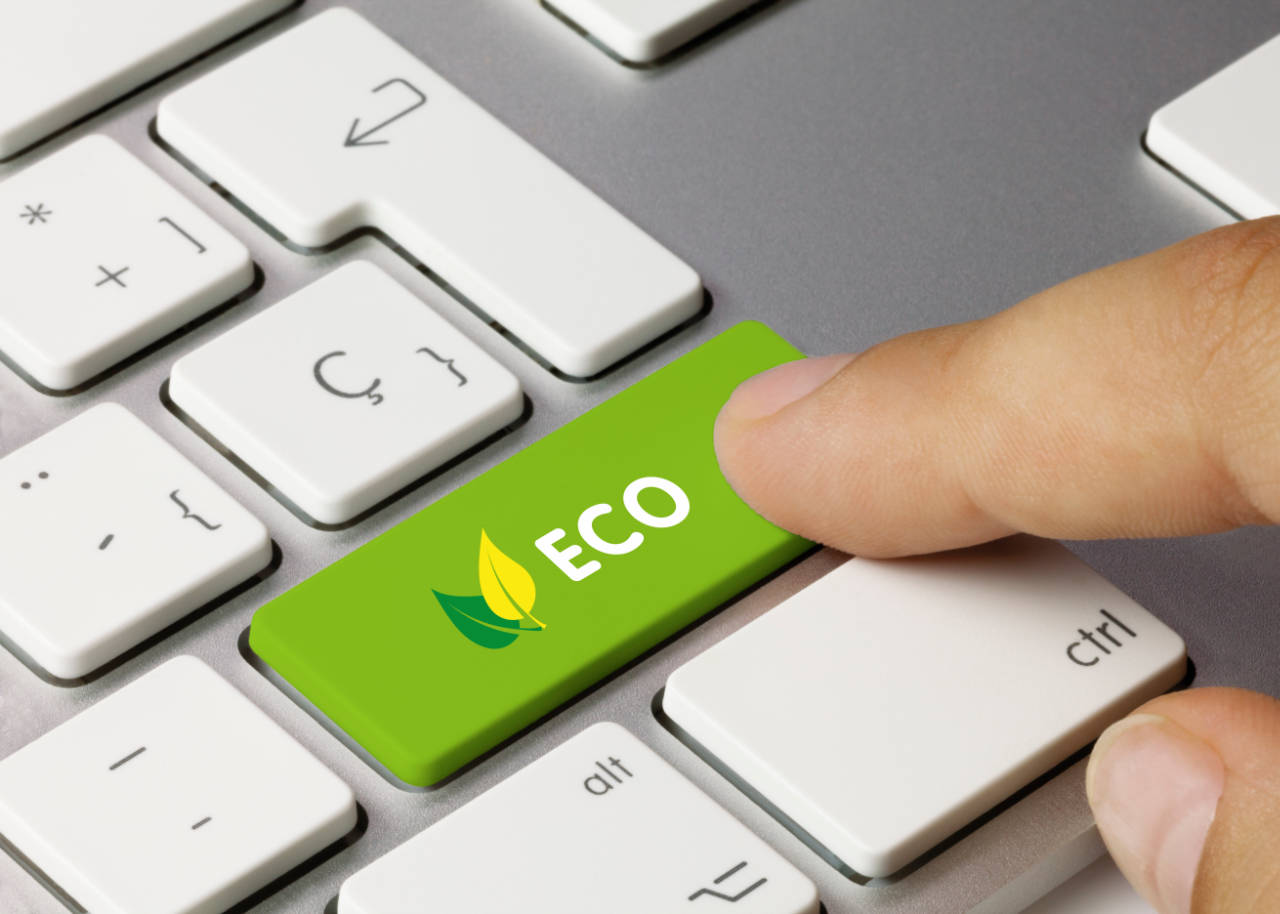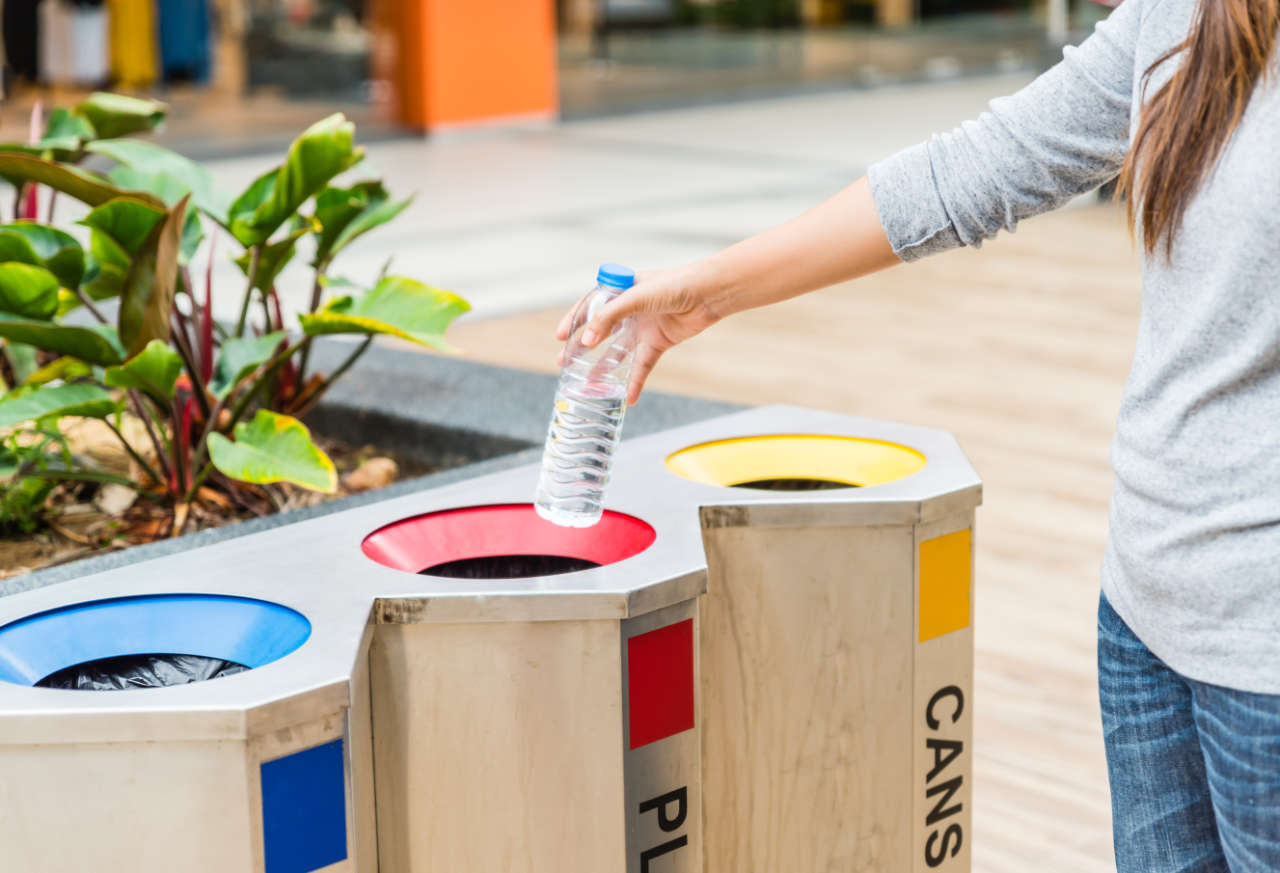Whether you’re concerned about your business’s impact on the environment or want to reduce costs through more sustainable operations, many companies are asking how they can be more sustainable.
It’s a particularly big concern among SMEs (small and medium-sized enterprises) because simple changes can have significant consequences. According to a 2022 QuickBooks study, 65% of small firms said they had taken steps to reduce the environmental impact of their operations.
But how can business be more sustainable? In this article, we outline ten ways to get started.

Why Sustainability Is Important
The drive for sustainability has become a pressing agenda across almost every industry. In this context, the term “sustainability” relates to environmental protection and the way organizations can reduce the negative effects their operations have on the world around them.
Depending on the organization’s industry and location, its sustainability practices might concern issues such as energy consumption, waste management, and pollution.
Although it’s easy to credit most of the blame to large multinational firms, small businesses play a crucial role in their operations as part of broader supply chains across the U.S. and beyond. SMEs comprise 90% of all organizations globally, and their practices are often intertwined with suppliers and other stakeholders.
Research by KPMG focusing on sustainability and environment protection found that a small organization’s Scope 1 emissions (from direct operations, such as gas used to fuel vehicles) are often part of a larger corporation’s Scope 3 emissions (from indirect activity, such as the purchase of raw materials or supplier emissions). This means that good sustainability practices among SMEs can snowball across the supply chain.
U.S. organizations of all sizes have adopted incentives to introduce a sustainable business model.
These incentives can range from:
- Moral: The 1.5º C threshold is rapidly approaching, causing potentially irreversible damage to the ecosystem. Many organizations have committed to sustainability to curb the damage and support federal and state efforts to combat climate change.
- Economic: Reducing climate emissions and incorporating a sustainable model is not just good for the planet; it’s also good for your business. According to the Business of Sustainability Index, 66% of U.S. consumers and 80% of young adults said they are willing to pay more for sustainably sourced products.
- Cultural: Organizations that promote sustainability are likely to create a healthier work environment. Team members who are part of ethical business practices will have greater morale, which can improve workplace culture.
- Reputational: By committing to environmental sustainability, you can improve your reputation in the industry. This is particularly true if you certify to ISO 14001, the international standard that describes best practices for environmental management. A certificate verifies your claims that you operate sustainably, and it can help persuade stakeholders to choose your business over a competitor.

How Can a Business Be More Sustainable?
With these benefits in mind, it’s clear that a sustainable business can also be a successful one. From an improvement in productivity and a reduction in cost to a greater reputation among stakeholders, there are many reasons to adopt eco-friendly business practices.
But how can your business be more sustainable? Here are ten ways you can get started.
1. Review your practices
Creating an effective, sustainable business begins with a robust plan. You can start by auditing your current practices to understand the size of your organization’s carbon footprint and the amount of work ahead of you.
2. Reduce trash levels
By 2030, the volume of trash being delivered to landfills each year is expected to hit 2.59 billion tons. As such, organizations must take whatever steps they can to reduce waste. You should consider, for instance, reusing items rather than disposing of them and switching to products that are designed to last longer.
3. Recycle
Consider purchasing recyclable goods wherever possible and implement initiatives to help employees recycle. This might include adding green trash containers throughout the workplace or displaying posters to remind people about ethical waste disposal.

4. Make your supply chain green
An efficient and environmentally friendly supply chain can lower energy usage, improve efficiency, and minimize waste. You can start by seeking out suppliers that are equally committed to sustainability. Ask them about their business sustainability practices and look for proof of ISO 14001 certification.
You should also consider sourcing products and services locally wherever you can. By doing so, your business can reduce carbon emissions while supporting other SMEs.
5. Introduce an eco-friendly workplace
Sustainable businesses don’t only help the planet; they can also improve the wellbeing of your employees. Try creating an eco-friendly environment for workers. A clean, quiet office and a few houseplants can promote a healthy, minimalist workspace. Meanwhile, waste should be kept to a minimum and disposed of promptly and responsibly.
6. Encourage staff to act
Look for ways to get your team involved in your environmental initiatives, whether through formal initiatives, workplace policies, or training courses designed to promote awareness of sustainability issues.
Even small, individual efforts, from cycling to work to using reusable coffee cups, can play a significant role in creating a culture of sustainability and environmental responsibility.
7. Reduce paper waste
Although organizations increasingly operate online, they still get through vast quantities of paper records. In fact, paper waste alone accounts for 40% of all trash produced in the U.S. This adds up to 71.6 million tons of paper being thrown out each year.
Unfortunately, the majority of paper products aren’t sustainably sourced. One report estimates that for every metric ton of paper manufactured, 942kg of carbon dioxide is produced. Organizations can combat this by reducing the amount of paper they use and sourcing recycled paper.
8. Conserve water
Pay attention to water usage—careless practices waste huge amounts daily. Faucets are left running, dishwashers are used when they’re only half full, and leaky pipes aren’t fixed. Meanwhile, the biggest offenders are our restrooms.
Conventional toilets use 5 to 7 gallons of water each time they’re flushed. By contrast, low-flow toilets can reduce water usage by almost 80%, and if you encourage employees only to flush when necessary, you can save even more water.
9. Supporting green schemes
Green schemes can take many forms, from donating unused items to implementing tree-planting schemes. Encouraging your employees to connect with their community can improve morale and boost your reputation locally or nationally.
Planting trees, in particular, can have a positive effect. An estimated 15 million trees are cut down annually, leading to many towns and cities combating the threat by launching urban forest schemes. Taking part in such a scheme has an immediate effect as your team gets involved in the planting process, but it also has a lasting impact on the area.
10. Implement an environmental management system
One of the best ways to promote business sustainability is by implementing an environmental management system. By implementing a formal set of policies and processes, you can take a holistic approach to tackling the environmental impact of your operations.
Organizations that want to get started should consider ISO 14001, the international standard that describes best practices for implementing an environmental management system. Businesses of all sizes and sectors can follow its framework, tailoring its requirements to their needs.
How Can Business Be More Sustainable with ISO 14001?
Amtivo’s team of expert auditors can help your company achieve ISO 14001 certification with our complete certification services, and help get you started on your journey to becoming more sustainable.
Contact Amtivo for a quote on ISO 14001 certification today.






